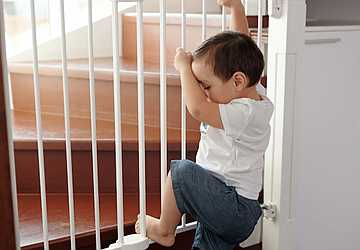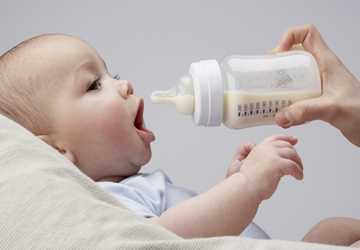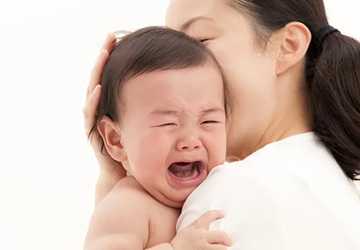Your baby will soon learn how to move on their own. They will learn to turn over, move on their hands and knees, and eventually stand up on their own. They will get better at grabbing and moving stuff. When kids are in a secure place, their parents don't always have to say "no." They move quickly, so if you look away for a second, they might reach things they're not supposed to touch. Here are some tips to keep your baby safe at home. This guide helps you keep all the rooms in your house safe. It also gives you a list to remember what you need to do.
What Does Babyproofing Mean?
To make sure your child is safe at home, check for things that could harm them and fix them. Make sure your home is safe for your child's health. When your baby learns to move around on their own, you have to be extra careful and keep an eye out for things you may not have considered before. There are things in your house that can hurt children, like things that are hot, things that are sharp, and furniture that might tip over. Grown-ups know about the risks, but kids don't understand them, so we need to consider that an important issue and take necessary measures.
When is the Right Time for Babyproofing?
Some parents prepare things for the baby before it is born, while others begin after it is born. It's best to begin sooner rather than later; that is, when your baby starts to move around and investigate things by themselves, you need to be careful about places or objects that could be dangerous. They might not know that they could get hurt.
Make your house a secure area for your child to explore. The good idea is to go to where your baby can reach and check for things that might harm them.
Childproofing Tips for a Safe and Secure Home Environment
Here are some tips for childproofing to secure your home for the baby.

1. Protect the Fireplace
The fireplace is warm and comfy, but it's not good for a baby. Make sure your child stays safe by putting a barrier around the fireplace to keep them from getting too close. To keep children away from the fire, you can place something around the fire area.
2. Get the Smoke Detectors
Keep things in your home that tell you if there is a fire or dangerous gas called carbon monoxide. This will help you and your family stay safe.
3. Safeguard the Electric Outlets
To keep your baby safe, cover the electrical plugs so they can't touch them. Make sure you can't see wires that carry electricity. Little kids enjoy playing with toys and putting their fingers in small places.

4. Baby Safety Gate Installation
Baby gates are helpful for things other than stairs. You can use them to make sure your baby doesn't go into areas like the kitchen, laundry room, or garage. If your baby can move around on the floor, safety gates can help keep them safe by blocking the stairs and preventing accidents. Having gates at both ends is a good thing to be cautious.
5. Lock the Toilet
When babies are about one year old, they have fun playing with things that they can bend or rotate. Lots of people do not know, but it is not normal. They enter the washroom, turn on the hot water, and might get hurt by mistake.
6. Use Furniture Anchors
Parents may not realize that their furniture can cause harm until someone gets injured. Coffee tables with sharp corners can be dangerous for babies. Take a look at your home and check if there are any sharp corners that could harm your baby. Cover them with soft materials like furniture anchors or edge bumpers. Ensure your furniture and oversized items at home are sturdy and won't fall if someone pulls on them. You can put heavy furniture on the wall so it doesn't fall over the baby.
7. Constantly Repairing the Home
You should keep looking for any shortcomings that might be dangerous for your baby and try to fix them as soon as possible. Regular repair in the home can lead to a safe and sound environment that is absolutely secure for your baby.
8. Keep the Batteries Out of Reach
We use many things every day, like toys, TV remotes, car keys, and calculators. These small things have little batteries inside. Children could try to eat these small batteries just like they might with other little objects. If you swallow a battery, it can cause a lot of damage to your body. Place batteries and small items that require batteries in high areas. When you get rid of old batteries, make sure to discard them with care. Please ensure the spots where batteries fit are securely closed on all the things that require them.
9. Bedding
If your child can climb out of their crib, it's better to give them a shorter bed or put a mattress on the floor to keep them safe. Young children under the age of 6 shouldn't use the top bunk of a bunk bed that older children sleep on.
10. Keep Away the Chemical Products
Parents have different opinions on dirt and germs, but all agree that dangerous things should be kept away from children. If you have a baby, keep dangerous things out of their reach. This includes things like cleaning things, plants, medicine, soap, insect repellent, and other things that can be dangerous. Put these things up high or use cabinets that can be locked.
Conclusion
Moms and dads should make sure their little ones are safe and not in danger. To ensure your home is safe, protect sharp corners and keep your home cleaned and repaired frequently. Being very careful while taking care of a new baby can help to make sure they are safe and kept from harm. If you do what this guide says, your baby will be safe in your home, and as a result, you will worry less.



